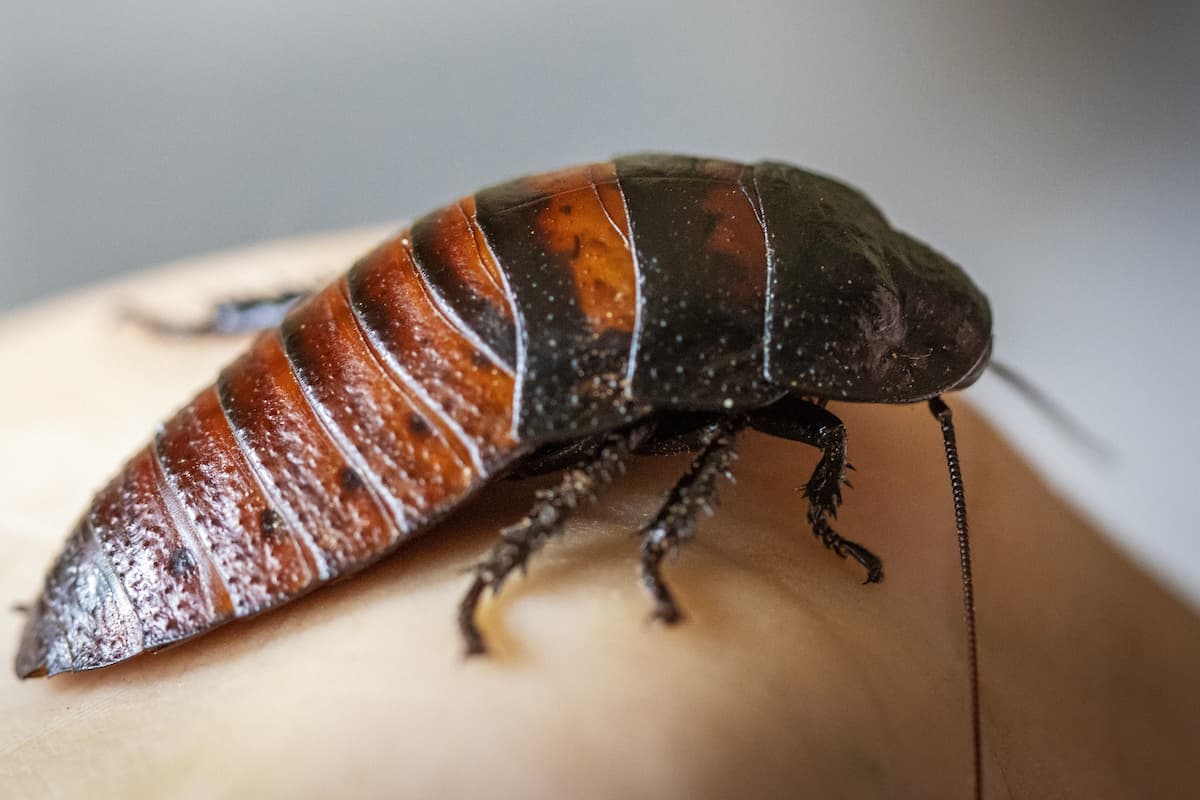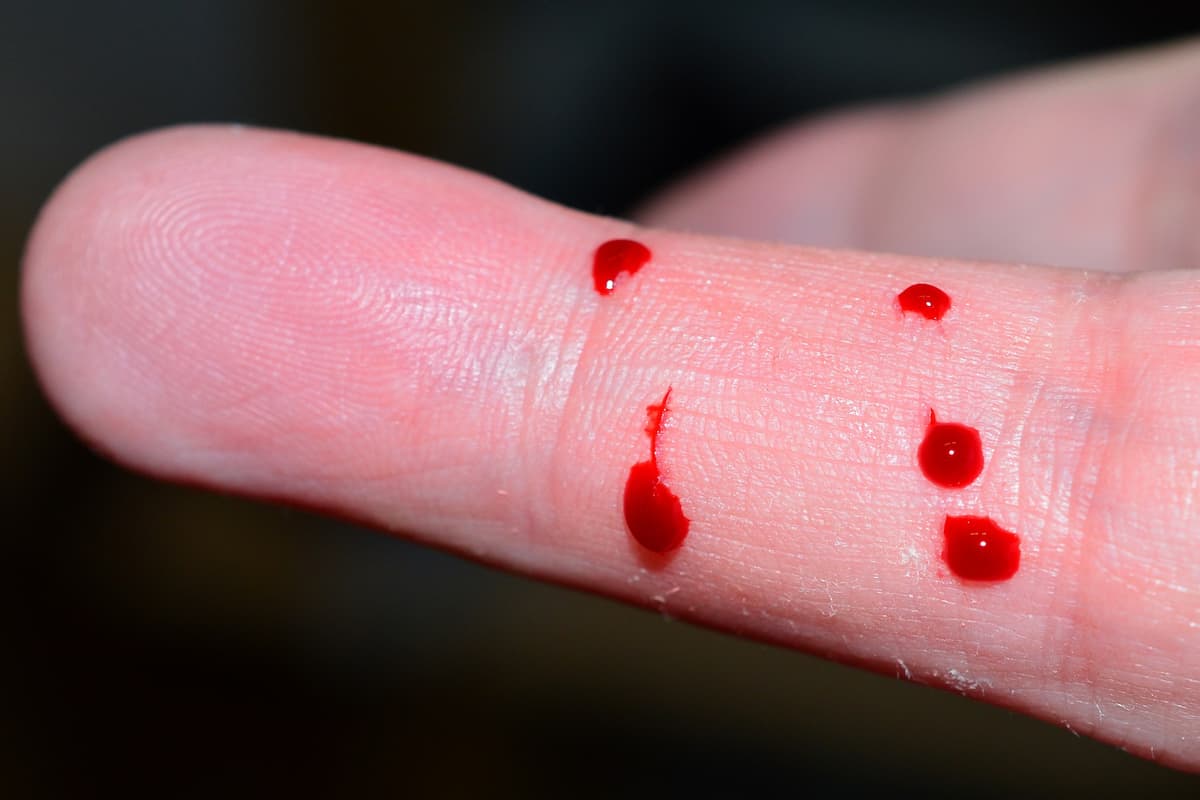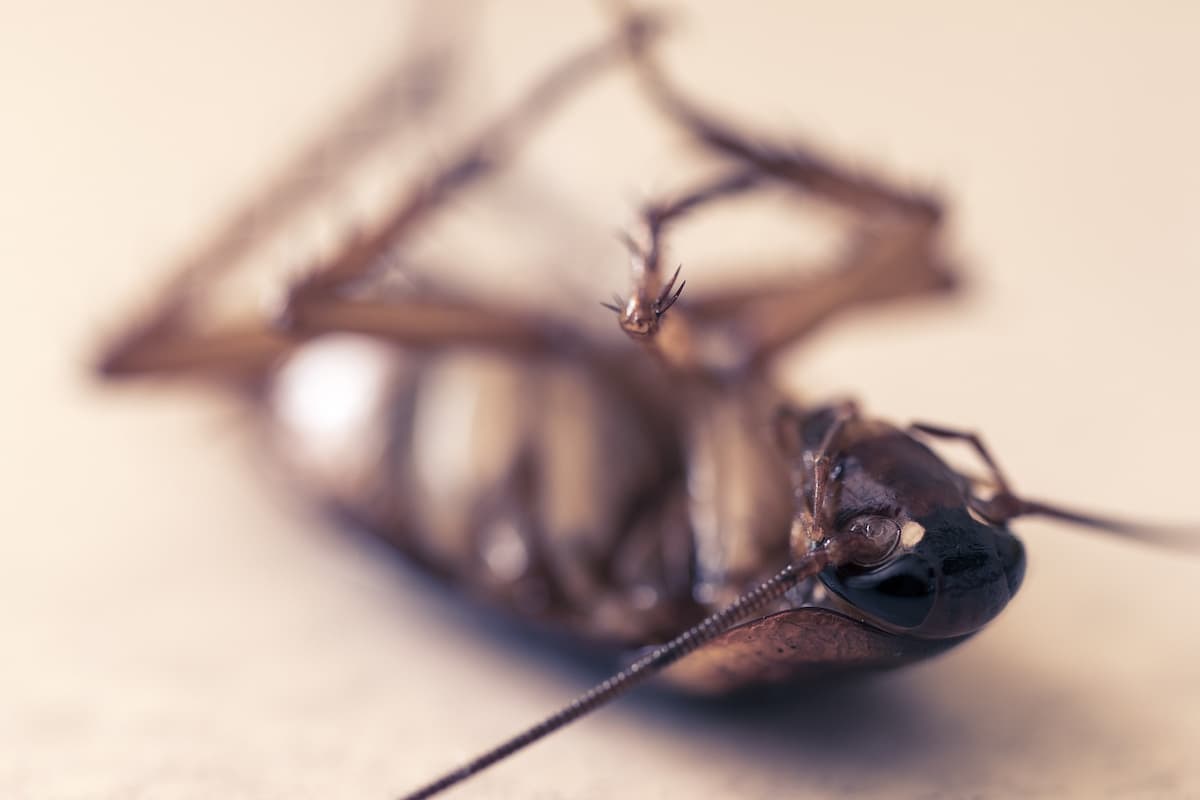Do Cockroaches Have Blood? (Red vs. White Blood)
If you’ve ever smashed a cockroach, you may have noticed a strange lack of blood.
But why?
Cockroaches do have blood, but they don’t have the red-colored blood that most creatures do. Instead, cockroach blood can be either white, off-white, clear, orange, or yellow. Their blood does not have the red color you see in most other animals because it does not contain hemoglobin.
What Is the Blood Color of a Cockroach?

Cockroach blood can be either clear, white, cream, yellow, or orange, depending on factors like the sex and age of the roach.
Why Do Cockroaches Have White Blood?
Having different colored blood can seem alien to us, which makes many people wonder why in the world roaches don’t have red blood like pretty much everything else.
Well, the main reason that roaches, and many other insects, do not have red blood has to do with the way they transport oxygen around their bodies.
In humans and most other animals, the body uses the bloodstream to move oxygen and get it to the organs.
Hemoglobin, specifically, is what carries the oxygen in our blood.
And since hemoglobin contains a red protein, every animal that has it in them will bleed red.
Cockroach blood has something different, though.
Their blood contains hemolymph, which circulates around the roach’s body and carries necessary chemicals, just like human blood.
However, hemolymph does not include oxygen.
Instead of carrying oxygen in their blood, cockroaches have something called a tracheal system that transports oxygen.
Since roaches have a tracheal system and do not need hemoglobin, they do not have the red protein that turns their blood red.
Thus, when you smash a cockroach, you typically see white blood because that is the natural color of hemolymph.
Why Do Cockroaches Have Red Blood?
Cockroaches do not have red blood.
In fact, most insects do not have red blood.
Yet, there are some exceptions.
For example, worm blood contains hemoglobin, which is why their blood is red like ours.
How Else Is Cockroach Blood Different From Human Blood?
Besides the lack of hemoglobin, there are a few more differences between human and insect blood.
One of the main differences has to do with how the blood flows around the body.
You see, humans and most other vertebrates have a closed circulatory system.
A closed circulatory system means that blood does not just flow wherever it wants in the body.
Instead, we have veins and blood vessels that our blood must stay in, and we rely on them to carry our blood to where it needs to be.
Cockroaches, though, have an open circulatory system, meaning they do not have veins and blood vessels.
In roaches and most other insects, blood flows freely around the body, allowing it to bathe the tissues and organs directly.
Another dissimilarity between human and roach blood is that cockroach blood does not contain any gasses.
We already discussed how roach blood does not carry oxygen, but it also does not move around carbon dioxide as our blood does either.
Rather, CO2 flows through their tracheal system.
How Is Cockroach Blood the Same as Human Blood?

Human and cockroach blood both transport essential chemicals, like hormones and nutrients, around the body.
Thus, without blood, neither a human nor a roach could live.
Why Don’t Cockroaches Bleed?
If you’ve ever smashed a roach, you may have noticed that they don’t bleed out in the way humans do.
And there are several reasons for this.
One of which is that they do not have a closed circulatory system.
In humans, because our circulatory system is closed, our hearts have to pump blood through our veins and blood vessels so that oxygen and nutrients can get to our organs and tissues.
But, since a roach’s circulatory system is open, there is no need for the blood to pump because it stays on their organs and tissues all the time.
And because roaches’ blood doesn’t pump in the same way it does in people, there is no pressure that causes the insect to bleed.
Another reason that roaches don’t bleed is that their blood contains hemocytes which clot the blood very fast.
This quick clotting is also why roaches can survive for a while without a head.
Their blood is able to clot in their neck, which creates a seal and keeps the other organs functioning.
How Long Can Cockroaches Live Without a Head?
Roaches can typically live for up to a week without their heads.
Roaches can survive without their heads because they have control reflexes in each part of their bodies.
Thus, they do not need their brain to continue to move around.
Furthermore, roaches will not suffocate without a head because they do not breathe through their nose or mouth.
Rather, roaches use small holes along their bodies to respire.
And unlike many other creatures, they do not have to have a brain to control their breathing.
Their bodies perform this function on their own.
Ultimately, the only reason a headless roach can’t live out its whole life this way is that it can not eat or drink.
So, it is the lack of a mouth that ends up being the downfall of a headless roach since the insect can’t last too long without water and food.
Read Also >> Can A Cockroach Survive Being Cut In Half?
Will Roach Blood Hurt Me if I Touch It?

For the most part, roach blood will not harm you.
However, you shouldn’t touch roach blood if you can avoid it.
You see, between ¼ and ½ of people have roach allergies, and roach blood and other body parts could trigger an allergic reaction.
Also, roaches can carry diseases on their bodies, which you could expose yourself to if you touch the blood.
Thus, you do not want to handle a roach or its blood directly, or you could come into contact with the bacteria that causes E. coli or salmonella.
Why Do Some Roaches Have Orange Blood?
Most of the time, when you smash a roach, you will observe that their blood is white or a similar shade.
Yet, if the smashed roach is a female about to have young, the blood may contain an orange hue.
This color comes from the vitellogenin, which female roaches produce in their bloodstream before birthing because it provides extra nutrients for their offspring.
Why Do Some Roaches Have Red Blood?

Roaches never have red blood.
If you smashed an insect, and it has red blood, it is not a roach.
Do Cockroaches Have Hearts?
Yes, roaches have hearts, which they use to move blood around their bodies.
However, a roach’s heart is a bit different from a human heart.
For one, a roach’s heart has 13 chambers, compared to a human heart which contains four.
Also, roach hearts can not beat by themselves as human hearts can.
Instead, the roach’s heart relies on muscles in the body cavity to beat.
Can Roaches Actually Survive a Nuclear Blast?

Since this article has discussed so many distinctive attributes of a roach’s body, let’s finish by examining an extreme legend of roach survival that has circled for decades.
Can a roach actually survive a nuclear blast?
Well, the short answer is no, they can not.
Roaches can not survive a nuclear blast because the heat would kill them instantly.
However, if only exposed to the bomb’s radiation, they could live.
You see, humans can not handle more than 1,000 rads of radiation for more than ten minutes.
Yet, a roach can withstand 100 times that amount (100,000 rads).
And since the bomb dropped at Hiroshima emitted around 10,300 rads, a cockroach could survive the radiation from a nuclear blast.
Conclusion
Cockroaches do have blood, and that blood is almost always a white or cream color.
Yet, at times, it could be clear, yellow, or orange.
Roach blood looks different from human blood because cockroach blood does not contain hemoglobin.
Table of Contents
- What Is the Blood Color of a Cockroach?
- How Else Is Cockroach Blood Different From Human Blood?
- How Is Cockroach Blood the Same as Human Blood?
- Why Don’t Cockroaches Bleed?
- Will Roach Blood Hurt Me if I Touch It?
- Why Do Some Roaches Have Orange Blood?
- Why Do Some Roaches Have Red Blood?
- Do Cockroaches Have Hearts?
- Can Roaches Actually Survive a Nuclear Blast?
- Conclusion
